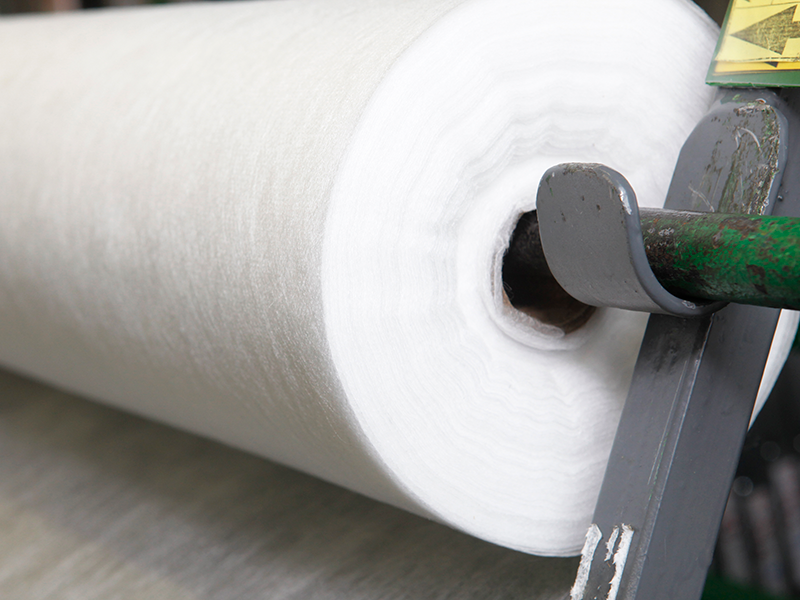Recovery in industries like building/construction, geotextiles, auto manufacturing and filtration will drive major increases in demand for durable high-performance nonwovens across the next five years, according to the latest exclusive market modelling from Smithers.
Data available to purchase now in its report –
The Future of Industrial Nonwovens to 2029 – show that in 2023 total consumption across 37 industrial end-use applications totaled 6.86 million metric tons, with a value of $27.16 billion.
This sector is growing faster than consumer nonwovens, as the business disruption through the first half of the decade recedes. World consumption is projected to increase to 7.41 million tons in 2024, and just exceed 10.56 million tons in 2029; equivalent to a +7.3% compound annual growth rate (CAGR) for 2024-2029. Over the same period the total surface area of these will increase at a faster rate, +8.0% CAGR, as lighter basis weight, higher performance industrial nonwovens enter the market.
Reflecting this wider trend across the next five years value in constant terms will increase at a +8.2% CAGR, to reach $43.65 billion in 2029.
As this happens, the market will react to significant changes both in end-user requirements and the available nonwoven technology. For industrial applications, the market is dominated by an even split between drylaid and spunlaid variants. With each accounting for over 45% of world demand by volume, other process types (airlaid, wetlaid, etc) are confined to smaller niche applications. There is some interest in developing industrial nonwovens from more sustainable feedstocks, although this is lower than for consumer nonwovens.
Furthermore, longer lifecycles and higher technical parameters will mitigate against a pre-emptive switch to non-polymer material sets.
The most important applications for industrial nonwovens in 2024 are automotive manufacturing, building/construction, geotextiles, packaging, coating substrates, and industrial wipes – combined accounting for over 85% of contemporary consumption.
In building/construction, nonwovens are used in carpeting and other flooring, housewrap, insulation, and roofing. This makes the segment highly dependent on house building. This is forecast to recover moderately over the next five years, with more purchases of nonwovens for house-wrap, insulation, laminate underlays, carpeting.
Similar factors impact sales of geotextiles, although this segment benefits more from infrastructure and commercial development. Use of nonwoven drainage liners, erosion control, and underlays for new road and rail are all benefitting from post-Covid government stimulus plans, and the impetus for sustainable land improvement.
In vehicle construction, a stimulus is expected as supply chain issues are resolved. A return of consumer confidence and incentives to transition to electric vehicles will have a positive impact, including for higher performance, lightweight nonwovens. Among the most lucrative opportunities is developing nonwoven battery separators to optimize the performance of next-generation vehicle batteries.
Nonwoven coating substrates have multiple applications – vinyl tablecloths and upholstery, luggage, drapes, wall coverings, synthetic leather, coated papers, tape base, and flocked fabric base.
Nonwovens are increasingly able to offer lower-cast, higher performance alternatives to textiles and specialty paper for these. As consumer tastes evolve, older, vinyl-coated substrates are becoming less popular and being replaced by newer softer leather-like materials.
Packaging applications include tea bags, durable re-use bags, and absorbent pads for meat and fish. This sector makes wider use of airlaid variants, which are benefitting from pressure to substitute away from plastics to more sustainable packaging materials.
Published today,
The Future of Industrial Nonwovens to 2029 from Smithers give unparalleled insight into historic, contemporary, and future demands in this sector. A comprehensive data set – over 130 tables and figures – quantifies the market for 37 industrial applications, further segmented by:
- Nonwoven variant (Drylaid, Airlaid, Wetlaid, Spunlaid, Other)
- Raw material (PP, PET, PE, Other polymer, PP fiber, PET fiber, Rayon/Lyocell, Wood pulp, Other fiber)
- Geographic market (Western Europe, Germany, France, UK, Italy, Spain, Benelux, Scandinavia; Eastern Europe, Turkey, Russia, Poland, Other Europe; North America, US & Canada, Mexico; South America, Brazil, Other South America; Asia, China, India, Japan, Other Asia; Rest of the World.
